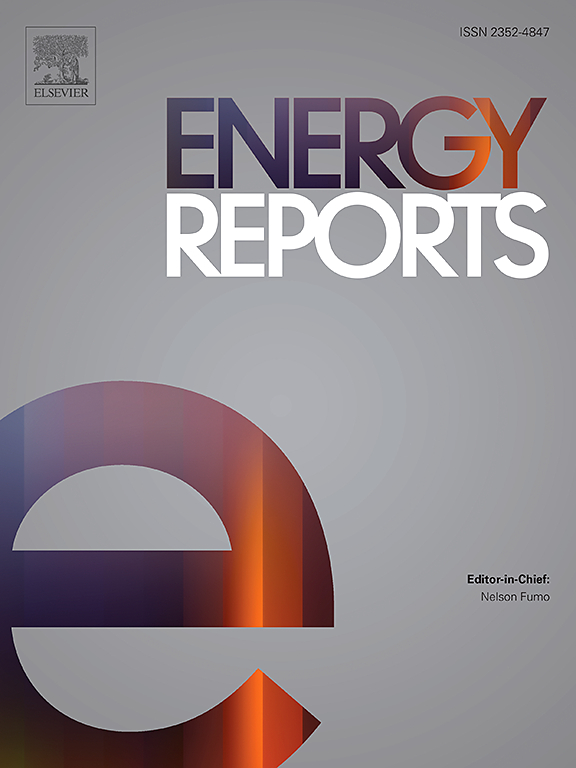基于决策分析的电动汽车充电站选址:一种前沿模糊粗糙框架
IF 5.1
3区 工程技术
Q2 ENERGY & FUELS
引用次数: 0
摘要
电动汽车在支持可持续交通和可持续发展方面具有重要意义。随着全球对电动汽车需求的不断增长,电动汽车充电站(evcs)市场也急剧增长。提出了一种集多准则决策、模糊集和粗糙集于一体的EVCS选址实用模型。本研究旨在利用模糊理论和粗糙集理论的优势,有效地解决EVCS位置的模糊性,从而弥合EVCS位置评估的空白。首先,评估标准涵盖环境、经济、技术和社会驱动力。其次,应用F-DIBR模型确定选址因素的权重值;最后,首次提出了混合模糊粗糙数(FRN-MACONT)模型的综合归一化混合聚合法(MACONT),得到了排序结果。在此基础上,提出了一种定义混合模糊粗糙数的新方法,该方法考虑了一组对象之间的相互关系,并根据动态环境条件灵活地表示粗糙边界区间。该研究的新颖之处在于,用一种新的方法F-DIBR确定EVCS位置的驱动力的重要性,并用一种新的FRN-MACONT方法选择最佳位置。结果表明,“经济性”是最重要的指标,而“系统可靠性”是最关键的子指标。调查结果还表明,科纳克地区表现最好,而芝力地区排名第二。综合敏感性分析验证了所提框架的有效性、鲁棒性和有效性。根据研究结果和分析,进一步讨论了一些管理启示。所介绍的方法有可能为绿色交通文献做出贡献。本文章由计算机程序翻译,如有差异,请以英文原文为准。
Decision-analytics-based electric vehicle charging station location selection: A cutting-edge fuzzy rough framework
Electric vehicles are of great significance in supporting sustainable transportation and sustainability. In parallel with the increasing demand for such vehicles worldwide, the electric vehicle charging stations (EVCSs) market has grown dramatically. The study presents a practical model for selecting EVCS sites integrating multi-criteria decision-making (MCDM), fuzzy, and rough sets. The research aims to bridge the gap in evaluating EVCS locations by leveraging the superiorities of fuzzy and rough set theories to address vagueness effectively. Firstly, assessment criteria cover the environment, economic, technology, and social drivers. Secondly, a fuzzy Defining Interrelationships Between Ranked criteria (F-DIBR) model is applied to determine the weight values of siting factors. Last, for the first time, the Mixed Aggregation by COmprehensive Normalization Technique (MACONT) with hybrid fuzzy rough numbers (FRN-MACONT) model is proposed to obtain the ranking results. Further, a new approach for defining hybrid fuzzy rough numbers is suggested, based on an improved methodology for determining rough numbers' lower and upper limits, allowing consideration of mutual relations between a set of objects and flexible representation of rough boundary intervals depending on the dynamic environmental conditions. The study's novelties reside in deciding the importance of the driving forces used in determining the EVCS site location with a novel method, F-DIBR, and selecting the optimal site with a new FRN-MACONT approach. The results show that "economy" is the most significant criterion, whereas "system reliability" is the most critical sub-criterion. The findings also indicate that the Konak territory performs the best, whereas the Cigli territory is the second best. Comprehensive sensitivity analysis verifies the proposed framework's validity, robustness, and effectiveness. As per the research findings and analyses, some managerial implications are further discussed. The approach introduced has the potential to contribute to the green transport literature.
求助全文
通过发布文献求助,成功后即可免费获取论文全文。
去求助
来源期刊

Energy Reports
Energy-General Energy
CiteScore
8.20
自引率
13.50%
发文量
2608
审稿时长
38 days
期刊介绍:
Energy Reports is a new online multidisciplinary open access journal which focuses on publishing new research in the area of Energy with a rapid review and publication time. Energy Reports will be open to direct submissions and also to submissions from other Elsevier Energy journals, whose Editors have determined that Energy Reports would be a better fit.
 求助内容:
求助内容: 应助结果提醒方式:
应助结果提醒方式:


